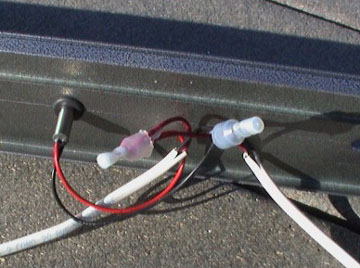Notes on Wire
Selecting A Wire Protection of the connections to avoid corrosion should be considered in adverse environments. The MicroStars have a life cycle of about 100,000 hours so depending on usage, might ultimately have to be replaced. Because of this, care should be given in the installation to allow excess wire for light removal and replacement. Berkeley Point sells Belden cable #8442, which is a twisted pair of 22 gauge tinned and stranded wires, individually insulated and then both contained, in an outer jacket. This is great wire for the Tri-Cluster and MicroStar installations in marine and outdoor applications where corrosion may be an issue. Bell wire and low voltage control wire can be found in most hardware stores and these types of wire are fine for most residential and architectural applications. If you have any uncertainties or questions please get the advice of someone with the proper electrical background or contact us prior to your installation. Learning Center Wire A group of Tri-Clusters or
MicroStars If you string MicroStars or Tri-Clusters together with a common feed line (+ & -) from the power source, "T" each MicroStar lead into the corresponding color wire on the feed line.
If you cluster some MicroStars or Tri-Clusters, connect all red wires to the red feed wire and all black to the black feed wire. If this isn't clear, contact us or someone with electronic skills and make sure you understand. If the polarity on a MicroStar or Tri-Cluster is reversed, no damage will occur but the LED will not light. Wire gauge is typically 22 gauge or larger. Phone cable, bell wire and other low voltage control wire is acceptable in MicroStar or Tri-Cluster circuits. Either solid or stranded wire will work. Tinned wire is preferable in marine or corrosive environments. Connections may be soldered or crimped. If the connection is in a moist or wet environment, care must be taken to seal and protect the connection to avoid corrosion or shorting of the circuit. There are many methods and any electronics supply or chandlery can assist you in determining the best and most cost effective method for your application. Switches |
$30 minimum order required
Copyright © 2000-2026 Berkeley Point. All Rights Reserved.Conditions of Use | Privacy Notice | Shipping Policies | International Orders


